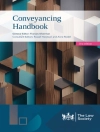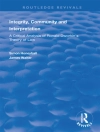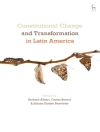The contributions to this volume were written by historians, legal historians and art historians, each using his or her own methods and sources, but all concentrating on topics from the broad subject of historical legal iconography. How have the concepts of law and justice been represented in (public) art from the Late Middle Ages onwards? Justices and rulers had their courtrooms, but also churches, decorated with inspiring images. At first, the religious influence was enormous, but starting with the Early Modern Era, new symbols and allegories began appearing. Throughout history, art has been used to legitimise the act of judging, but artists have also satirised the law and the lawyers; architects and artisans have engaged in juridical and judicial projects and, in some criminal cases, convicts have even been sentenced to produce works of art. The book illustrates and contextualises the various interactions between law and justice on the one hand, and their artistic representations inpaintings, statues, drawings, tapestries, prints and books on the other.
Innehållsförteckning
Chapter 1. Introduction.- Part I: Law, Justice and Art.- Chapter 2. The Bruges exhibition ‘The Art of Law’.- Chapter 3. Law’s Manifestations: From Signs to Images – on Early Modern Legal Iconology.- Chapter 4. Works of Art as Criminal Punishment in the Low Countries (14th-17th c.).- Chapter 5. “ut experiri et scire posset”. Pictorial Evidence and Judicial Inquiry in Hans Fries’ Kleiner Johannes Altar.- Part II: Moralising Law and Justice Representations in the Late Middle Ages and Early Modern Era.- Chapter 6. Changes in Late-Medieval Artistic Representations of Hell in the Last Judgment in North-Central Italy, ca. 1300-1400: A Visual Trick?.- Chapter 7. Medieval Iconography of Justice in a European Periphery: The Case of Sweden, ca. 1250-1550.- Chapter 8. Justitia, Examples and Allegories of Justice, and Courts in Flemish Tapestry, 1450-1550.- Chapter 9. The Judgment of Cambyses: Multiple Sources and Post-David Nachleben of a Rich Iconographical Topic.- Chapter 10. Multilayered Functions of Early Modern Court Room Equipment: Lüneburg for Example.- Part III: Lawyers and Justices: Their Books, Their Work, Their Symbols.- Chapter 11. Civic Bodies and their Identification with Justice and Law in Early Modern Flemish Portraiture.- Chapter 12. The Paradoxes of Lady Justice’s Blindfold.- Chapter 13. Lawyers and Litigants: The Corrupting Appeal and Effects of Civil Litigation in Hendrick Goltzius’ Litis abusus.- Chapter 14. Framing the Law. Legal Iconology of the Grotesque in the Sixteenth Century.- Chapter 15. The Mechanical Art of Rhetoric in an Ordinary Sixteenth Century German Formulary.- Chapter 16. A Ghostly Corpse in the City? Spatial Configurations and Iconographic Representations of Capital Punishment in the ‘Belgian’ space (16th-20th c.).- Chapter 17. Liberté, Egalité, Fraternité ou la Mort. The Iconography of Injustice in the Work of Pierre Goetsbloets.- Part IV: Justice Architecture and Decorations in the Long 19th Century.- Chapter 18. Joseph-Jonas Dumont’s Prison Gatehouses: architecture parlante in Neo-Tudor Style.- Chapter 19. Experiencing Justice in the Cour d’Assises of Brabant (1893-1913). A Place of Education and Entertainment.- Chapter 20. The Judge, the Artist and the (Legal) Historian: Théophile Smekens, Pieter Van der Ouderaa, Pieter Génard and the Antwerp cour d’assises.- Chapter 21. Images of Justice in the Colonial Courts of British India. The Judicial Iconography of the Bombay High Court.
Om författaren
Stefan Huygebaert is a Research Foundation Flanders (FWO) Ph D Fellow at the Ghent Legal History Institute and Department of Art History, Musicology and Theatre Studies (Ghent University). His dissertation, entitled Visual Ideals of Law and Justice, is an iconological study of legal imagery in nineteenth-century Belgium. In 2014-2015, and again in 2016-2017, Stefan was a Ph D fellow (Stipendiat) within the Minerva Research Group ‘The Nomos of Images: Manifestation and Iconology of Law’ at the Kunsthistorisches Insitut in Florenz (Max-Planck-Institut). He publishes and teaches on legal iconography and nineteenth-century art, and recently co-edited the catalogue for the exhibition The Art of Law: Three Centuries of Justice Depicted (Groeningemuseum, Bruges).
Georges Martyn studied Law (1984-89) and Medieval Studies (1989-91) in Leuven (Belgium) and obtained a Ph D degree in Law at the Catholic University of Leuven in 1996, with a dissertation on private law legislation in the early modern Netherlands. He has been an ‘advocaat’ (barrister/lawyer) between 1992 and 2008 at the bar of Kortrijk, is now honorary member of the Ghent bar, and is a substitute justice of the peace. He is full professor at the Law Faculty of Ghent University, teaching ‘History of Politics and Public Law’, ‘General Introduction to Belgian Law’ and ‘Law & the Humanities’. His publications deal with legal history in the Netherlands in the Early Modern Era, the reception of Roman law, the legal professions, the evolution of the sources of the law in the nineteenth and twentieth centuries and legal iconography and iconology. He is a member of the Belgian Royal Commission for the Edition of the Old Law, the Flemish editor-in-chief of the Belgian-Dutch legal history review Pro Memorie and co-editor of the series Studies in the History of Law and Justice.
Vanessa Paumen is an art historian focused on Northern Renaissance art. Since 2010, she has been the coordinator of The Flemish research centre for the arts in the Burgundian Netherlands at the Groeningemuseum in Bruges (Belgium). Its mission is to initiate, facilitate, stimulate and disseminate research related to Flemish art of the 15th-16th centuries. She was curator of the exhibition ’The art of law. Three centuries of justice depicted’ at the Groeningemuseum (27 October 2016 – 5 February 2017) and author/editor of the accompanying catalogue, published by Lannoo Publishers, 2016.
Eric Bousmar is full professeur at the Université Saint-Louis in Brussels, where he is co-director of the Centre de Recherches en Histoire du Droit et des Institutions. He has got a doctoral degree in history from the Université catholique de Louvain, and a degree in medieval studies from the Katholieke Universiteit Leuven. He mainly publishes on power, society and mentality in the Southern Low Countries, particularly in the Burgundian era (XV-XVI c.), as well as on the art of history writing throughout the ages, stressing the interaction of literature and history, especially in relation to the Burgundian State, Belgium and Brabant.
Xavier Rousseaux is research director at the National Fund for Scientific Research (FRS-FNRS) and professor at the Université catholique de Louvain, Louvain-la-Neuve, Centre for Law & Justice History. Working extensively on of the history of crime and justice, in 2007-2012, he coordinated the BELSPO Network Justice and Society, and Justice and Populations. The Belgian experience in international Perspective, 1795-1950.












